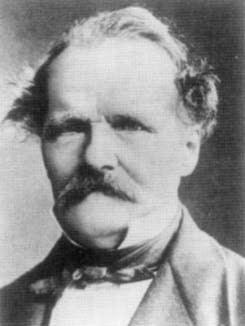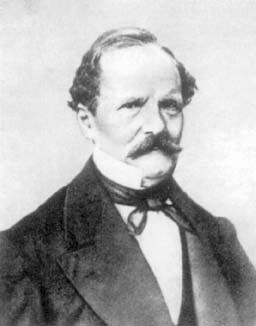Residence Germany Role Mathematician | Name Ernst Kummer Nationality Prussian | |
 | ||
Institutions University of BerlinHumboldt-Universitat zu BerlinUniversity of BreslauGewerbeinstitutLomonosov University Alma mater University of Halle-Wittenberg Doctoral students Gotthold EisensteinGeorg FrobeniusLazarus FuchsWilhelm KillingAdolf KneserFranz MertensHermann SchwarzGeorg CantorHans Carl Friedrich von MangoldtAdolf Piltz Education Martin Luther University of Halle-Wittenberg Similar People Leopold Kronecker, Richard Dedekind, Peter Gustav Lejeune, Georg Cantor, Karl Weierstrass | ||
Ernst Kummer
Ernst Eduard Kummer (29 January 1810 – 14 May 1893) was a German mathematician. Skilled in applied mathematics, Kummer trained German army officers in ballistics; afterwards, he taught for 10 years in a gymnasium, the German equivalent of high school, where he inspired the mathematical career of Leopold Kronecker.
Contents

Kummer
Life
Kummer was born in Sorau, Brandenburg (then part of Prussia). He was awarded a PhD from the University of Halle in 1831 for writing a prize-winning mathematical essay (De cosinuum et sinuum potestatibus secundum cosinus et sinus arcuum multiplicium evolvendis), which was eventually published a year later.
Kummer was married in 1840 to Ottilie Mendelssohn, daughter of Nathan Mendelssohn and Henriette Itzig. Ottilie was a cousin of Felix Mendelssohn and his sister Rebecca Mendelssohn Bartholdy, the wife of the mathematician Peter Gustav Lejeune Dirichlet. His second wife (whom he married soon after the death of Ottilie in 1848), Bertha Cauer, was a maternal cousin of Ottilie. Overall, he had 13 children. His daughter Marie married the mathematician Hermann Schwarz. Kummer retired from teaching and from mathematics in 1890 and died three years later in Berlin.
Mathematics
Kummer made several contributions to mathematics in different areas; he codified some of the relations between different hypergeometric series, known as contiguity relations. The Kummer surface results from taking the quotient of a two-dimensional abelian variety by the cyclic group {1, −1} (an early orbifold: it has 16 singular points, and its geometry was intensively studied in the nineteenth century).
Kummer also proved Fermat's last theorem for a considerable class of prime exponents (see regular prime, ideal class group). His methods were closer, perhaps, to p-adic ones than to ideal theory as understood later, though the term 'ideal' arose here. He studied what were later called Kummer extensions of fields: that is, extensions generated by adjoining an nth root to a field already containing a primitive nth root of unity. This is a significant extension of the theory of quadratic extensions, and the genus theory of quadratic forms (linked to the 2-torsion of the class group). As such, it is still foundational for class field theory.
